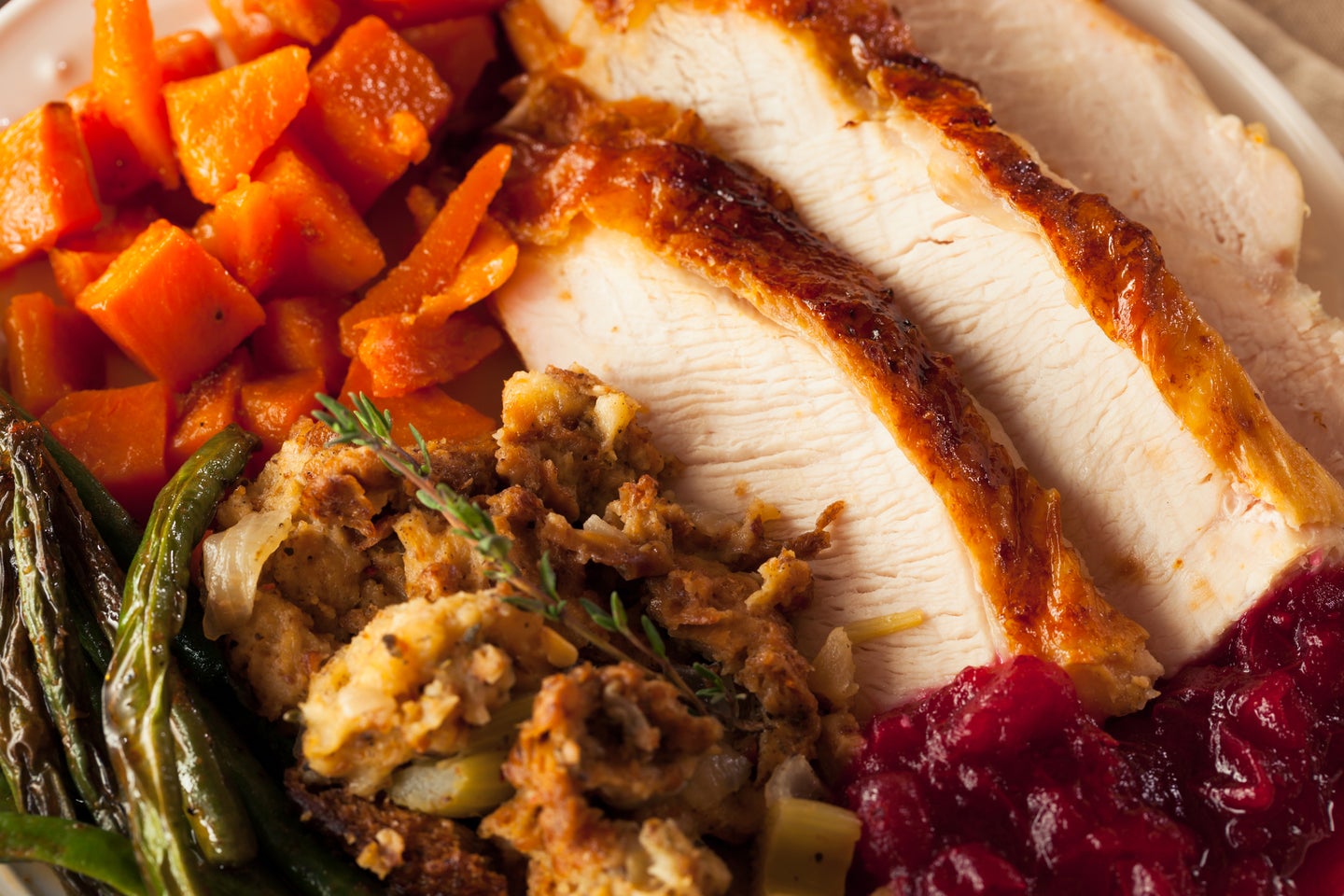How to cook and eat a turkey without dying
First things first: Don’t rinse that bird.

Thanksgiving is nearly upon us, and that means Americans are about to gobble up some 46 million turkeys. But in addition to being notoriously dry and flavorless, this traditional fowl serves up several potential hazards for home chefs unaccustomed to wrestling such large birds. Here are a few tips to keep in mind (and myths to throw away once and for all) if you don’t want a lot of bellyaching to ruin your festive feast.
Don’t rinse that bird
Most people realize that raw poultry carries dangerous bacteria, but unfortunately, this leads some cooks to rinse their butterballs and chicken breasts before cooking them. The U.S. Department of Agriculture (USDA) notes that it’s “virtually impossible to wash bacteria off the bird,” and that splashing water on the uncooked carcass is much more likely to leave your sink covered in contaminants and spread germs to stuff you won’t cook, like lettuce leaves. Roasting a turkey to the proper temperature (more on that in a second) will kill any potentially harmful bacteria.
If you’re feeling bad about sins of past Thanksgivings, well, don’t. As the Associated Press reports, even the famous chef Julia Child told her viewers that rinsing off a bird before cooking it was safer than taking it straight out of the store packaging (that’s likely where your grandparents got the idea). But it’s time to kick this misguided habit for good.
Also note that brining doesn’t have any bearing on food safety, but the USDA urges caution when transporting and disposing of the giant basin full of raw-turkey juice that will soon be sitting in your house.
Defrost turkey like a pro
Though thawing a big ol’ bird in the fridge can take ages, letting it sit out on the counter is not an option. Any temperature higher than 40º Fahrenheit and lower than 140º turns your turkey into a breeding ground for the kinds of bacteria that cause food poisoning. So unless you keep your kitchen near-freezing, that giant hunk of frozen fowl has no place outside the fridge. You can use an online calculator to determine how many days of fridge-chillin’ your turkey needs to thaw out.
If you’ve run out of time, those same calculators can tell you how long it will take to soak your frozen turkey into squishy submission in water—a process that will take hours instead of days. But if you’ve removed the bird from its packaging, you’ll have to put it in a sealed plastic bag or some other airtight container before dunking it. Otherwise you’re creating the same opportunity for sink and counter contamination described above.
Wash all your turkey-juiced surfaces (including your hands)
You needn’t splash turkey water all over your kitchen to risk food poisoning: It’s enough to drip juices on the counter or touch other foods with hands or utensils after contact with the raw bird. The Food and Drug Administration recommends washing all food-prep surfaces with hot, soapy water between uses, and giving your hands a thorough, 20-plus second scrubbing with soapy water pretty often.
Cook your turkey to a safe temperature
The secret to cooking turkey is that you’re probably doing it wrong. Put away the deep fryer and throw out your roasting pans, people—it’s time to spatchcock. (Side note: If you absolutely insist upon deep frying a bird, here’s our guide to doing so without also deep frying your hands and setting your house on fire.)
You might be irritated by all the buzz around spatchcocking, but it’s not hipster nonsense, friends. It’s science. This method (check out the complete guide to it here) won’t just make Thanksgiving tastier: By pushing your turkey into a shape that cooks faster and more evenly, you lower the risk of accidentally leaving some portions raw. Spatchcocking also solves the problem of stuffing, which can linger at dangerously cool temperatures inside a roasting bird. By squishing your fowl flat, you can let delicious fat drip down onto your dressing during the cooking process without creating a ball of moist, lukewarm bread full of multiplying bacteria.
Save your leftovers—or don’t
Nobody likes to waste food, and people tend to end up with a lot of leftovers after Thanksgiving. But most foods sitting in your fridge have the potential to grow dangerous pathogens. While there are ways to keep proper tabs on your globs of cold mashed potatoes and hunks of turkey, if you really don’t want to risk having to toss piles of lovingly crafted foods, consider planning your Thanksgiving feast specifically to minimize waste.
